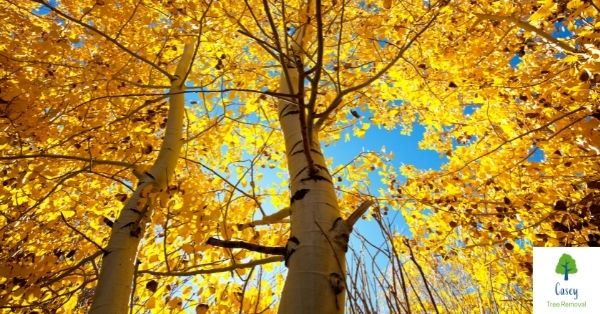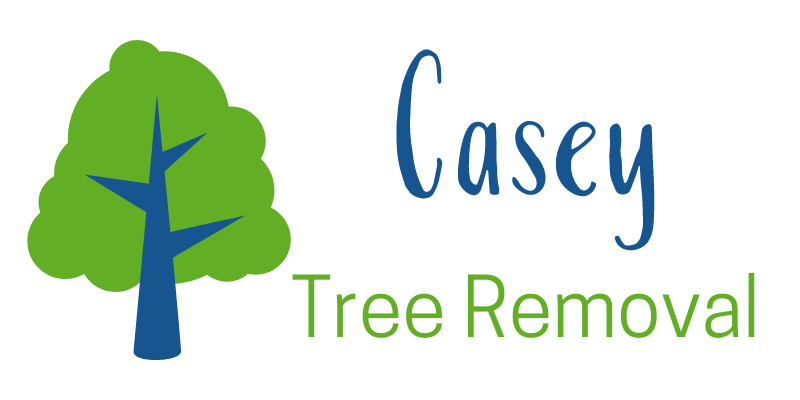Could your trees be dangerous in the upcoming autumn storms? Could they be putting your property at risk?
Trees are wonderful additions to our gardens and are fundamentally very strong and sturdy beings. However, in some circumstances trees can turn into hazards that should be managed proactively.
Autumn and Winter Storms
Structurally unstable or sick and damaged trees can often look perfectly healthy. It’s only when an outside force intervenes that they can fail, seemingly out of nowhere.
- High winds and autumn storms have the ability of break and topple damaged trees, sometimes catastrophically.
- Falling and breaking trees can serious damage or even destroy things around them such as cars, houses and sheds.
This autumn, we at Casey Tree Removal have put together a quick checklist to help you ensure your trees are strong and healthy. Strong, happy trees have little problem with storms!
5 Things to Check Your Tree For
1# Cracks
- Cracks can be caused by many things, including frost. They are often safe and can be healed by the tree.
- Larger cracks, cracks around the base and cracks on branches however, could pose a serious risk. Inspect your trees for cracks and get any checked out by a specialist to ensure they are healthy and strong.
Vertical cracks are one of the most obvious signs of damage and instability in a tree and very long and deep cracks need urgent attention by a qualified arborist.
2# Bracket Fungi
- Semi-circular fungi that appear anywhere and at any time on a tree. These cause serious heartwood decay, often even before they’re visible externally.
- Bracket-caused decay will weaken wood, causing branches to fall and, eventually, the tree to topple
- Pay special attention to Beech and Ash trees, both of which are especially susceptible to bracket fungus.
Once the brackets are visible, there is most likely already substantial decay within the tree caused by this fungus. This decay weakens the tree internally until it eventually topples.
Checking your trees for bracket fungi is a great way to pre-emptively spot weakened trees that might fall during a storm. If you find brackets, you can call a tree specialist to inspect and offer advice.
3# Declining Tips or Dieback
- Dieback is the slow decline of a tree as it suffers for one reason or another. Sometimes it’s due to disease, other times it’s due to manmade issues such as concreting around the base, change in soil alkalinity or other pollution.
- Declining tips is the first sign, where the twigs or tips of the tree begin to die and disappear. The dieback will most probably progress unless the initial cause goes away.
- Progressed dieback causes instability and the tree eventually dies completely. Tree professionals can inspect the tree to estimate the damage sustained and offer further options.
Trees must transport a vast quantity of nutrients from the ground to the highest leaves and everything in between. When the tree cannot do this, for disease or environmental reasons, it tends to shrink its size and begins dying back.
4# Weak stems (included unions)
- Where two branches come from the same fork or junction. These co-dominant branches can grow bark between them, causing serious instability.
- Weak stems and branches arise from this and the weaker of the two can fall once it gets too heavy to be supported by the poorly grown joint.
Known as a tree fork, or co-dominant stem, when these include bark they are called ‘included unions’ or ‘included bark junction’. Spotted early, when the stems are young, makes them very manageable through pruning out or shortening the weaker branch.
5# Previous damage
- Branches previously fallen off could be a sign of decay. This could suggest inherent weakness or progressive decline.
- Cuts and areas of exposed heartwood make trees very susceptible to infection from fungi like brackets. These cause decay and tree death.
Previous damage caused by outside forces can create weak spots or areas susceptible to fungal infection. Previous damage such as branches falling off can be a sign that the tree is already sick and decaying.
To fully protect your home and family, it’s a good idea to get trees that have sustained past damage looked at by a professional.
This isn’t expensive or time consuming and professionals can confirm the health of your tree. If trees are damaged but recoverable, our professionals can show you how to keep you tree healthy and take steps to manage any weak spots.
Keep your home and trees happy this autumn and winter!
Casey Tree Removal – All Tree Services including Tree Cutting, Tree mulching, Tree Trimming, Stump Grinding, Tree Pruning, Stump Removal, Emergency Tree Removal Experts In Melbourne!
Click here to read more articles regarding tree removal & related services.
If you are in Skye and looking for Casey Tree Removal, below is the best way to visit us.


Recent Comments